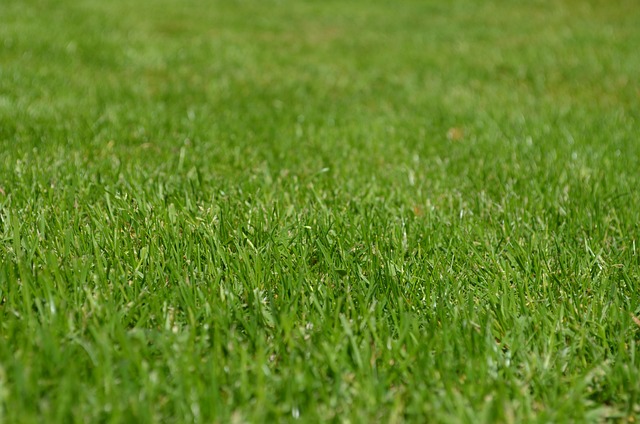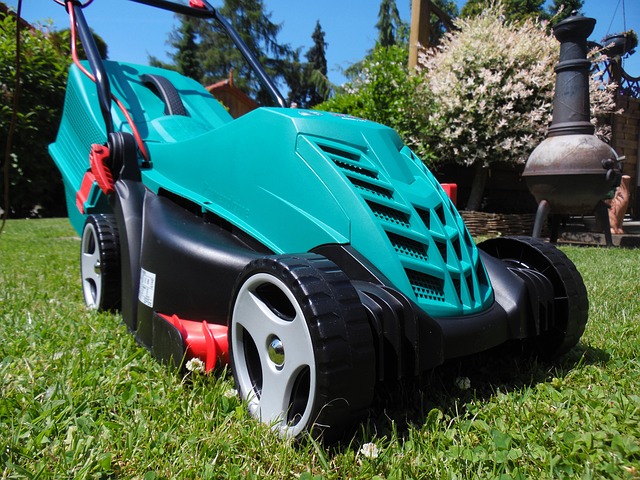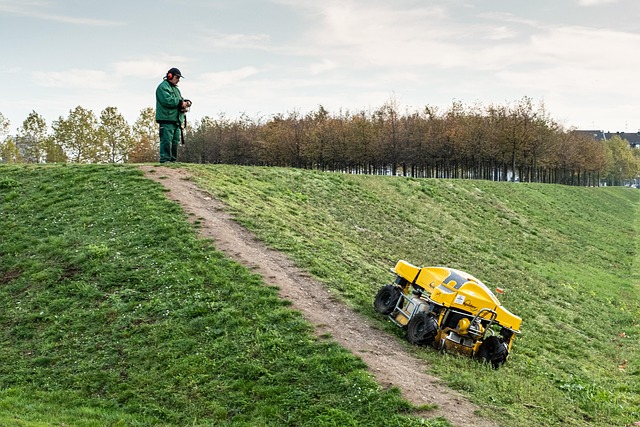Overseeding, applied strategically during late summer/early fall, enhances lawn density and health in industrial areas like Centennial, where managing weeds along pipelines is crucial. Effective industrial weed control strategies using targeted herbicides, regular monitoring, IPM principles, mechanical weeding, cultural practices, and biological controls maintain a lush lawn while preserving pipeline integrity and aesthetics. Tailored overseeding schedules, moisture-tolerant grass varieties, and optimized watering foster year-round vibrancy in Centennial's pipeline zones.
Maintaining lush, green lawns requires strategic planning, especially when it comes to overseeding. This essential practice ensures your lawn stays vibrant and healthy throughout the seasons. Our article explores the benefits and optimal timing for overseeding, guiding you in creating a thriving turf. We delve into effective industrial weed control strategies, crucial for managing unwanted growth around Centennial pipelines. By following best practices, you can promote robust grass development while minimizing environmental impact, ensuring your lawn stands out as a local landmark.
- Understanding Overseeding: Benefits and Timing for Lawns
- Implementing Effective Industrial Weed Control Strategies
- Maintenance Tips for Pipeline Areas: Ensuring Healthy Growth Near Centennial
Understanding Overseeding: Benefits and Timing for Lawns

Overseeding is a strategic practice that involves planting new grass seeds over an existing lawn to enhance its density and overall health. This process offers numerous advantages for lawn owners, especially those in industrial areas like Centennial where managing weeds along pipelines is essential. By overseeding, you can improve your lawn’s ability to compete with invasive plants and weeds, leading to a thicker, more vibrant carpet. This is particularly beneficial for areas exposed to harsh conditions, such as near pipelines, where industrial weed control becomes critical.
The timing of overseeding plays a pivotal role in its success. Typically, the best time to implement this maintenance plan is during the late summer or early fall when the weather cools down. In Centennial’s climate, this period allows the new grass seeds to establish before winter dormancy sets in. This strategic timing ensures that the lawn has ample opportunity to grow and strengthen, making it better equipped to withstand potential weed competition and harsh environmental factors, including industrial weed control measures along pipelines.
Implementing Effective Industrial Weed Control Strategies

Implementing effective industrial weed control strategies is paramount for maintaining lush lawn environments, especially in areas like Centennial where pipeline infrastructure is prevalent. Along pipelines, careful consideration must be given to herbicides and their application to ensure minimal environmental impact while achieving maximum weed suppression. Targeted, selective herbicides are ideal for controlling noxious weeds without harming the desired turfgrass species.
Regular monitoring and early detection of weed growth are key to successful industrial weed control near Centennial’s pipelines. Establishing a robust maintenance plan involves scheduling applications based on seasonal fluctuations and weed species’ life cycles. By employing integrated pest management (IPM) principles, professionals can implement eco-friendly methods like mechanical weeding, cultural practices, and biological controls alongside chemical interventions, fostering a balanced ecosystem that promotes healthy lawn growth while mitigating weed proliferation.
Maintenance Tips for Pipeline Areas: Ensuring Healthy Growth Near Centennial

Maintaining a lush and healthy lawn near Centennial, especially in pipeline areas, requires careful consideration to ensure optimal growth. Industrial weed control along pipelines is crucial for preventing unwanted vegetation that can disrupt the pipeline’s integrity and hinder the overall aesthetics of the landscape. Regular monitoring and prompt action are essential; identify and treat weeds early to avoid dense infestations.
Implementing a strategic overseeding schedule tailored to the region’s climate ensures the lawn stays vibrant throughout the year. In Centennial, focusing on resistant grass varieties that tolerate varying moisture levels is beneficial. Additionally, adjusting watering practices to meet the specific needs of pipeline areas can foster healthy growth while minimizing water waste.
Maintaining a lush, healthy lawn involves more than just regular watering and mowing. Implementing a comprehensive overseeding maintenance plan, especially in areas like industrial sites near Centennial, is crucial for long-term grass health. By understanding the benefits of overseeding and timing it correctly, combining effective industrial weed control strategies, and following specific maintenance tips for pipeline areas, you can ensure optimal growth and curb the spread of weeds. These practices promote a vibrant lawn that stands up to challenges, providing both aesthetic appeal and environmental resilience.
